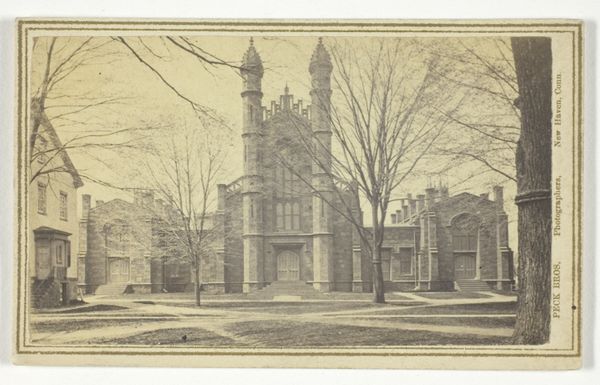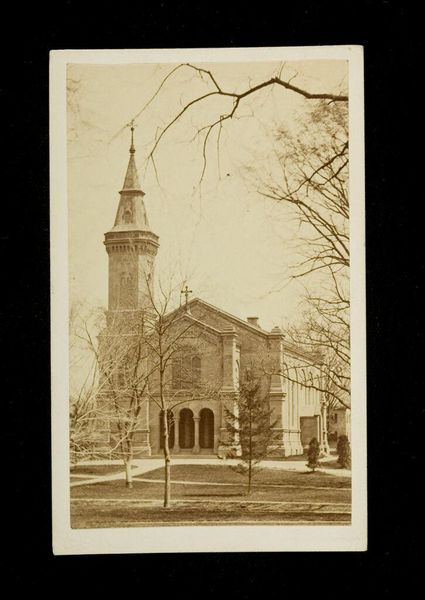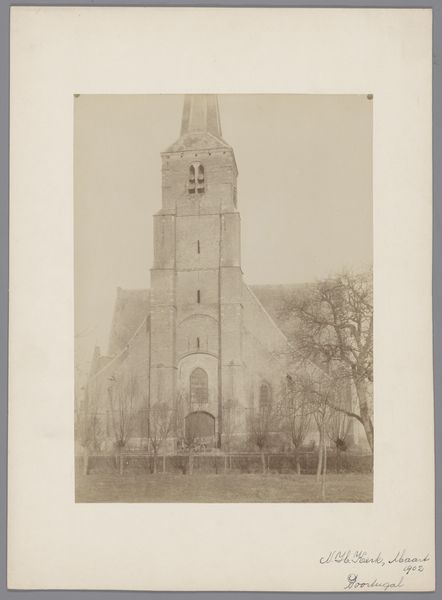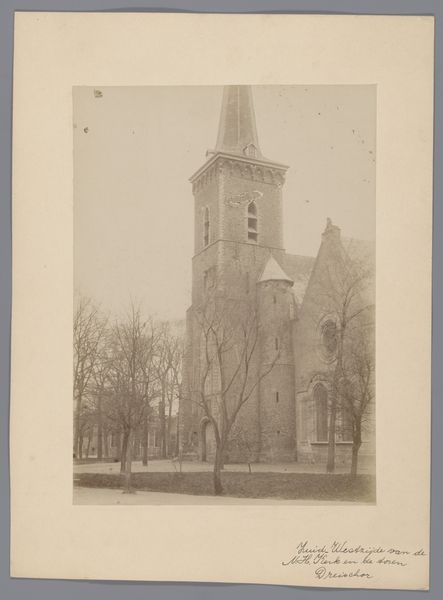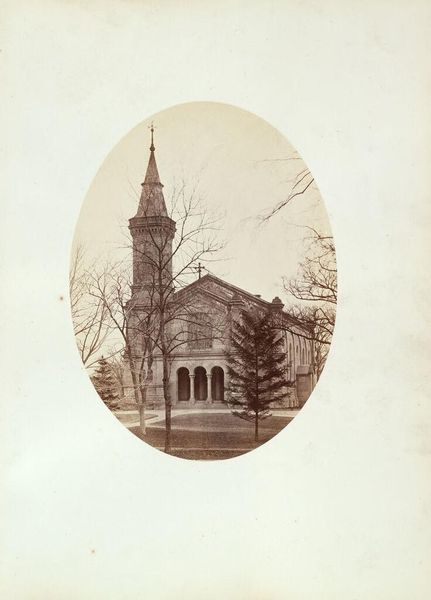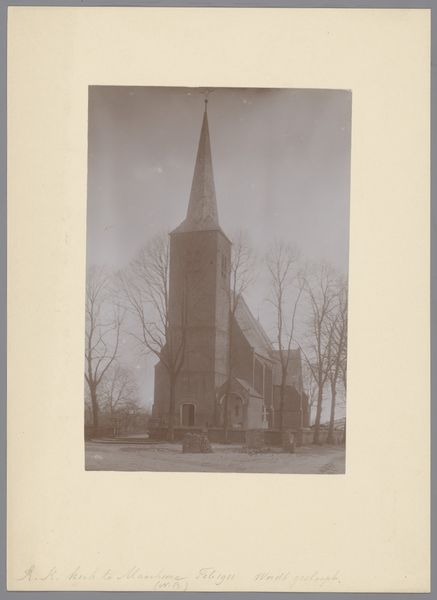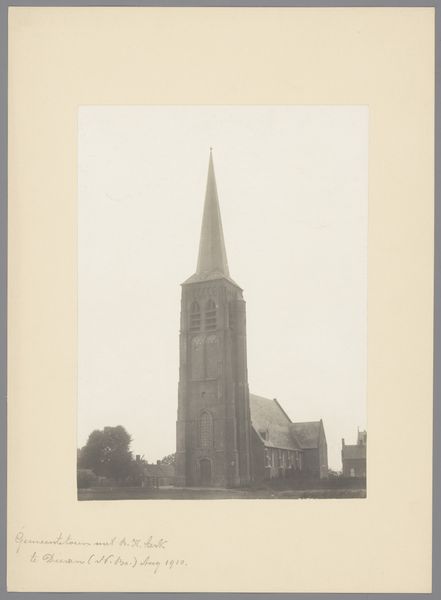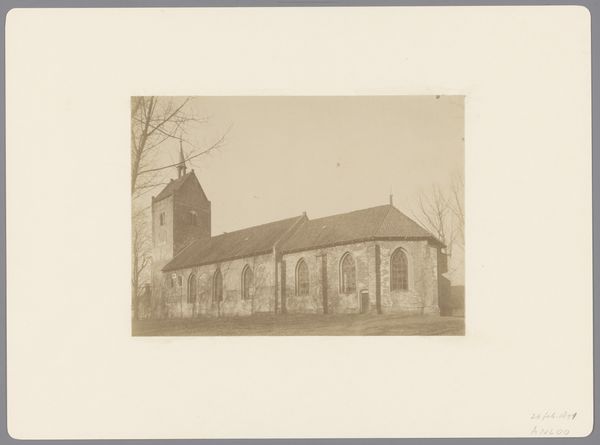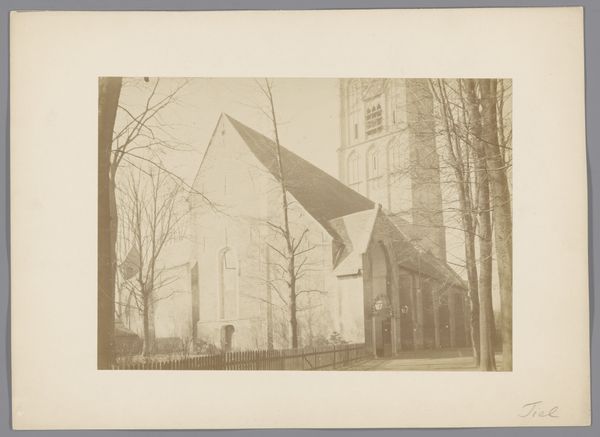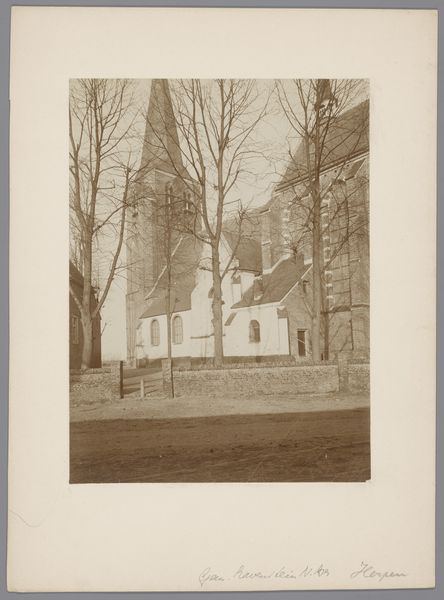
photography, site-specific, gelatin-silver-print
#
landscape
#
photography
#
site-specific
#
gelatin-silver-print
#
19th century
#
realism
Dimensions: height 186 mm, width 109 mm
Copyright: Rijks Museum: Open Domain
Curator: This compelling gelatin silver print is attributed to William Henry Jackson and is titled "Exterior of a Methodist Church, presumably in Denver." While its precise date is unknown, it's estimated to be from between 1860 and 1900, giving us a glimpse into a pivotal period in American history. Editor: Wow, what strikes me first is this incredible stillness. It’s almost haunting. The bare trees framing the solid stone structure create a sense of profound isolation and makes you wonder what that period of the city was like, and what sort of life surrounded the church. Curator: I find myself thinking about the social function of the church in that era. In the late 19th century, especially during periods of rapid industrialization and urbanization, religious institutions like this served as critical centers for community building, moral guidance, and social support. How did this structure influence the politics of a changing Denver? Editor: Totally. The church's steeple—that arrow aimed at the heavens—it makes you consider concepts like redemption and spiritual solace in the face of societal challenges. What do you make of Jackson's decision to capture it in gelatin silver? I find this process to create the feel of this particular church photograph really ties into that era of pioneering in the West, capturing the vast open spaces as well as these rapidly erected hubs of gathering. Curator: That's a smart observation. The sharp detail afforded by the gelatin silver process, allowed for a clear, almost hyperrealistic, documentation of this Western landscape, of how the architecture embodied notions of progress, civilization, and spiritual aspiration within this expanding frontier. Editor: You know, even now, looking at this image, I still find myself craving context. I wonder, for example, what songs might have filled that church? What kinds of sermons would they hear? It just conjures up an incredible desire to learn more about a specific point of time, but somehow so far in the past that the desire might not be fulfilled. It would make for an interesting immersive exhibit. Curator: I agree. This piece prompts crucial discussions about religious influence, westward expansion, and community formation. Thank you. Editor: Thank you, it certainly makes me appreciate the architecture of our country's past a little bit more, while I am living within this one in our present.
Comments
No comments
Be the first to comment and join the conversation on the ultimate creative platform.


